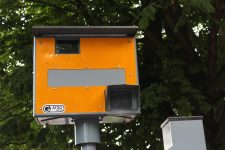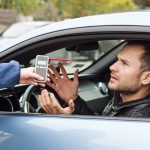Debunking Common Myths About Speed Cameras

Most motorists dread speed cameras.
Being caught speeding can lead to hefty fines and even suspension from driving, which can leave you struggling to carry out your everyday activities like going to work or doing the grocery shopping.
And with the number of speed cameras across NSW still increasing despite several being removed, it’s going to be even more likely that drivers will encounter them at one time or another.
But speed cameras are not infallible.
If you’ve been issued with a ticket, although you might be tempted to just accept it and pay the fine to have the matter over and done with, it is often possible to challenge speeding fines and have them dropped.
How do speed cameras work?
To understand the limitations of speed cameras, you first have to understand how they work.
Police handheld speed cameras, also known as radar guns, work by emitting a high frequency microwave beam at an angle to a vehicle or a line of traffic.
The beam reflects off the vehicle and this shift in frequency allows the machine to calculate the speed.
Mobile speed cameras can be used just about anywhere, and police will often position themselves around a bend or in a dip in the road so as to remain concealed until the last minute.
The radar is aimed at the traffic, and if it indicates that you are speeding, you will usually be stopped and booked on the spot.
There are some common misconceptions about speed cameras, and how they work.
We’ve put together a list of a few of them, so the next time you receive a fine, you might consider whether you are able to challenge it.
Myth #1: Speed cameras are always right
Think speed cameras are completely accurate? They aren’t.
Speed cameras have to be calibrated regularly to comply with guidelines from the National Association of Testing Authorities, but this doesn’t necessarily mean they are accurate.
In some cases, they can be wildly inaccurate, which can lead to false speeding penalty notices being issued.
Although the NSW Police Force hasn’t published details confirming the acceptable margin of error, even when they are used properly in optimum weather, speed cameras can still potentially be a few kilometres an hour out, a fact which could mean the difference between being fined or not being fined, or even between getting a suspension from driving or not.
There are also a number of limitations that go with the use of speed cameras.
In wet weather, the equipment can malfunction as raindrops and moisture can distort and scatter the signal.
Because the handheld radars that police officers use depend on line of sight, weather conditions which affect visibility, like fog or heavy cloud, could also potentially affect the accuracy and range of radar equipment and lead to false readings.
Myth #2: Speed cameras can detect you before you see them
Contrary to popular belief, police can’t book you for camera-detected speeding from over the horizon.
Speed cameras depend on an unobstructed line of sight to work, so if they can’t see you, they can’t tell what speed you’re going.
This also applies to hilly terrain and buildings.
Anything that obstructs the line of sight between your vehicle and the camera will impact its ability to tell your speed, and therefore could make a reading inaccurate.
The range the radar is being used at also affects the accuracy, because distance can disrupt the signal.
Because of the way the radar works, the further away your vehicle is, the wider the signal, which means that if you are a long way away or in heavy traffic, it is difficult for police to know which vehicle specifically is speeding and it’s possible that you could be wrongly targeted.
The recommendations that accompany speed cameras usually suggest that they are not used at long range in multi-lane situations, or where there is heavy traffic, as a certain amount of separation between targets is needed to get an accurate reading.
Short range is the best way to ensure they are accurate, so if police have obtained a reading on you from a long distance away when there was other traffic around, especially if the conditions were wet, it’s often worth questioning whether they got the right vehicle.
Myth #3: Human error can’t impact the reading
Speed cameras are very sensitive to movement and even a small tremor can have a significant effect on the reading, especially at longer distances.
This can lead to false readings, or the wrong vehicle being targeted.
As the signal widens the further away it is, tiny movements are magnified and even a twitch of a hand can potentially increase the speed reading by as much as 10 km/h.
This is enough to get you a speeding ticket even if you weren’t going over the limit.
Understanding the limitations of speed cameras can help you challenge a speeding fine and potentially avoid having demerit points and a traffic offence on your record.
If you have been booked for speeding, you have a number of options aside from paying the fine.
Speak to an experienced, specialist traffic lawyer to find out more about what you can do to try and have the speeding offence withdrawn or thrown out of court.






